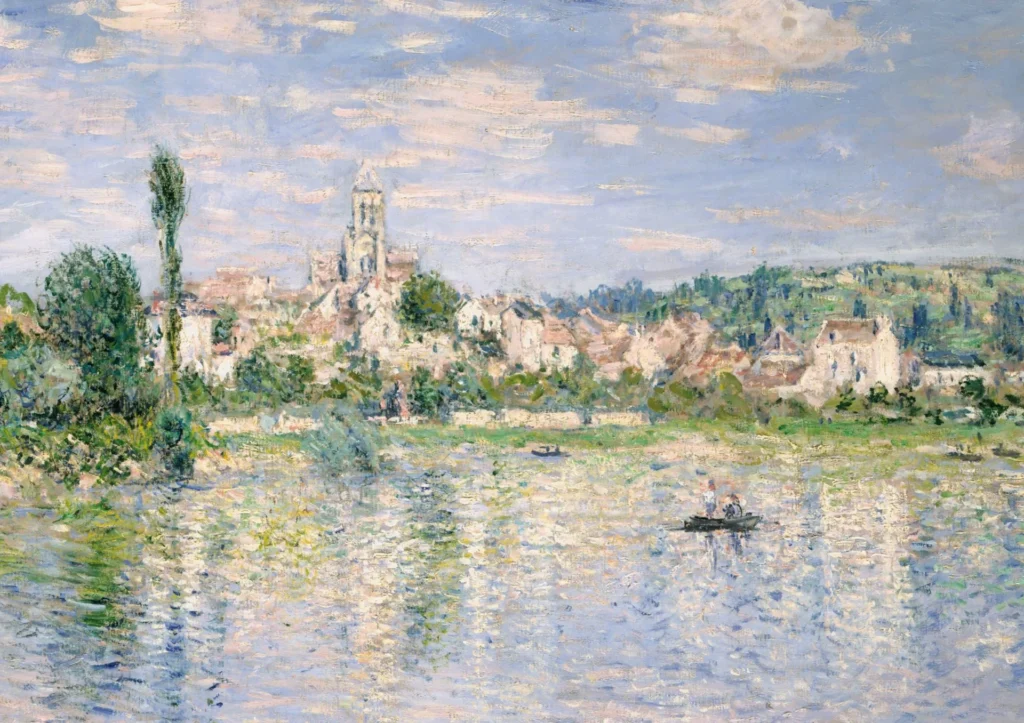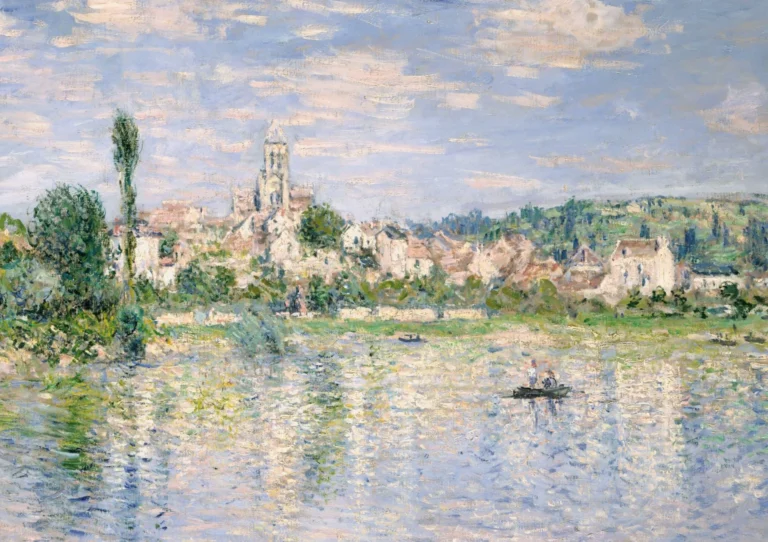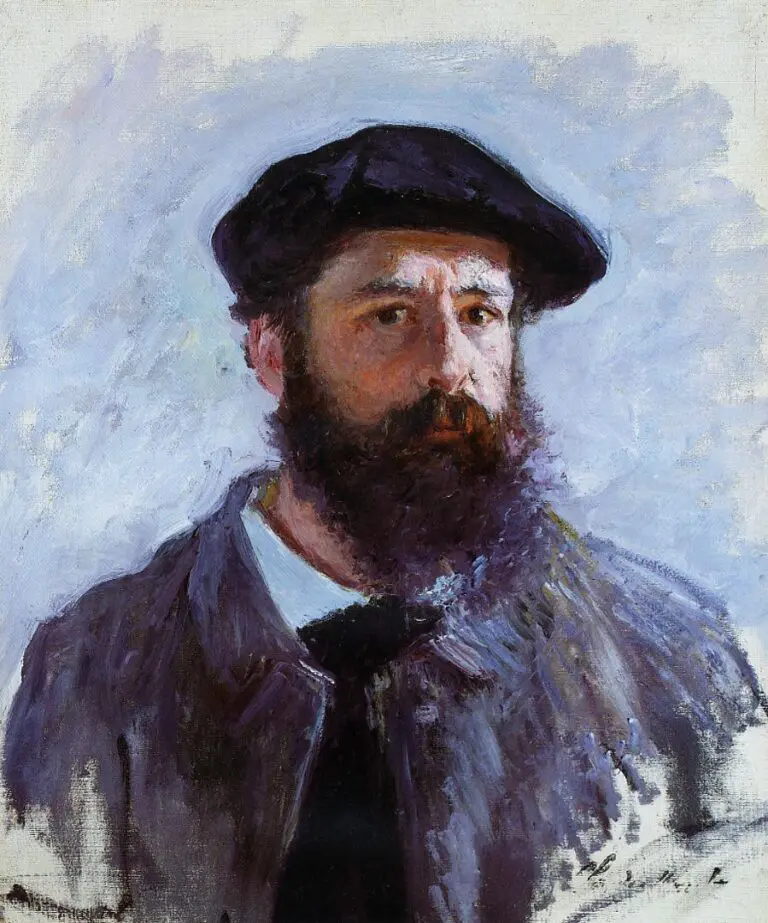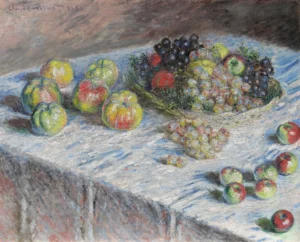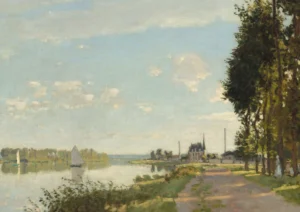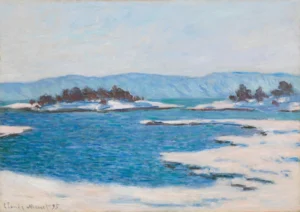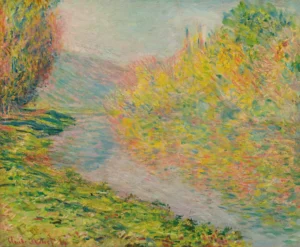Vetheuil in Summer (1879)
'Vétheuil in Summer' is a beautiful painting by Claude Monet, created in 1879, capturing the essence of the tranquil village of Vétheuil where the artist lived during a challenging personal time. The painting features the prominent church of Notre Dame amidst a lush, serene landscape painted with soft, inviting colors of pink, green, and blue. This artwork not only exemplifies Monet's unique approach to light and color but also signifies a pivotal moment in his life, blending personal experience with artistic expression.
1879
About the Artwork
The story behind 'Vétheuil in Summer' is deeply intertwined with both the personal life of Claude Monet and the idyllic setting of Vétheuil. Monet moved to this picturesque village around 1878, where he found inspiration in the natural beauty surrounding him. Despite the tranquility depicted in his painting, Monet was grappling with intense grief—the death of his wife Camille in 1879 weighed heavily on him. This contrast between external beauty and internal turmoil is a testament to Monet’s remarkable skill in channeling his emotions into his art. Painted from a studio-boat on the Seine, the composition highlights the idyllic characteristics of his surroundings while allowing Monet to escape, even momentarily, the hardships he faced.
Did You Know
Liked what you see? Add it to your collection.
Enjoyed reading? Share it.
... continued
Date
While some sources suggest the painting was created in 1880, it is more accurately dated to 1879, as indicated by the context and historical records.
Location and Setting
The painting depicts the village of Vétheuil, with the central tower and mass of the church of Notre Dame being a dominant feature. Monet often painted the town from a tiny studio-boat anchored in the Seine River.
Artistic Style and Composition
'Vétheuil in Summer' is characterized by its shimmering harmonies of pale pinks, greens, and blues, typical of Monet's Impressionist style. The palette is cool and sumptuous, reflecting the serene and unspoiled agrarian atmosphere of Vétheuil.
Personal Context
Despite the tranquil appearance of the painting, Monet was experiencing significant personal and financial turmoil during this period. His wife, Camille, died on September 5, 1879, and the family was facing financial difficulties and emotional tensions. However, Monet's ability to separate his art from his personal life allowed him to create works that did not reflect his immediate emotional state.
Ownership
The painting was purchased from Monet by his friend Dr. Georges de Bellio, either in 1879 or 1880. It later belonged to another Parisian collector, Donop de Monchy, who had married de Bellio’s daughter.
Current Location
One version of 'Vétheuil in Summer' is housed at the Art Gallery of Ontario (AGO) in Toronto. Another version is associated with The Frick Collection, though the specific current location of this version is not specified in the provided sources.




